So, here comes my next piece dealing with agricultural landscapes. It’s a motif I feel recurrently drawn to – please read on to find out why.
Some years ago – I don’t remember when exactly – I went to our municipal library. Looking for some interesting books, I was searching for inspiration. At the art section, I stumbled across a coffee table book. “Agricultural Landscapes” by a photographer named Heinrich Riebesehl. Though rather small and inconspicuous, the book instantly grabbed my attention. Its cover revealed the black-and-white photograph of a farming trailer, parked at the side of a dirt road. On the trailer’s loading floor, sacks filled with potatoes piled up. Wow! What a sculptural yet unpretentious representation of such a mundane thing. I took a short glimpse inside the book to confirm my initial impression – and went home with it immediately.
Then, during the Covid-19 summer, I came back to Riebesehl’s work. “Why not try a similar series of photographs?”, I thought. In this post, I’m going to show you some (quite a few) of my results. I also talk about what drove me – and how I put my ideas into practice. After some theoretical excursions, you can join me in the field (pun intended). In the end, you will also find a geekery part where I discuss my tool.
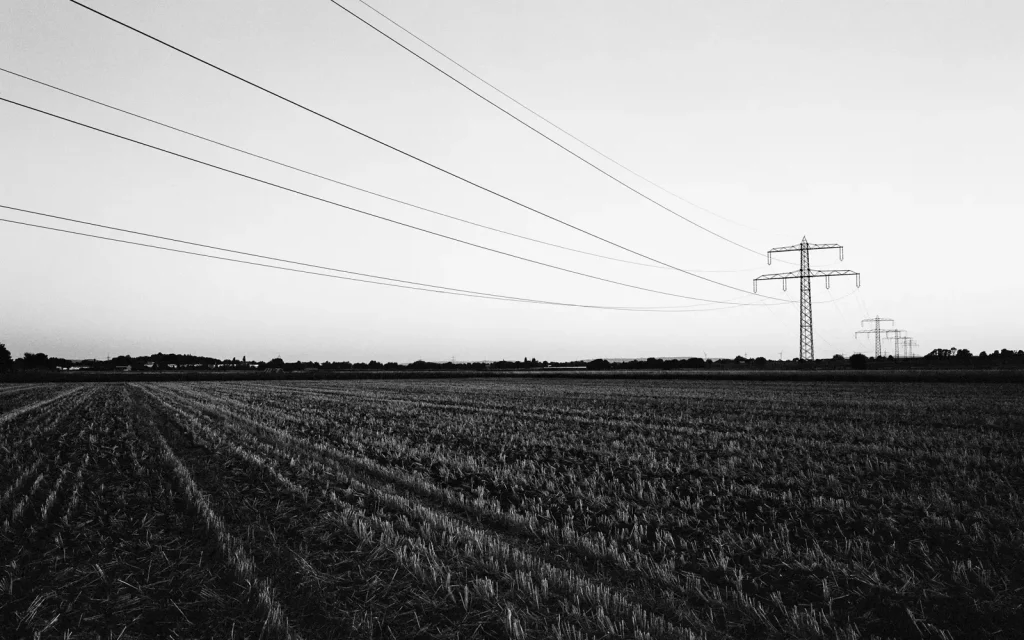
Chasing Riebesehl
For his series, Riebesehl followed a strict protocol: He shot everything with the same 6×9 medium format camera and a 65mm wide lens (or 80 degree viewing angle). The material: black-and-white film. He always chose the same small aperture and focused to infinity.
But Riebesehl not only fixed the technicalities, he also applied the same rules to the image content. Almost all of the photographs show the world at eye level. Avoiding perspective distortion, his approach led to vast landscapes and clear representations. No fancy angles, no extravagant cuttings, no drama. The sky: overcast and neutral in most cases. A quick glance at these sober images and one could be tempted to call them boring. As for me, I had to learn to appreciate such images. When I was younger, only the simple and bold pictures would appeal to me. Like a child that refuses to eat anything but pizza or fries. Now I love them.
Riebesehl shot all of his photographs in rural northern Germany. Farmland, sheds, silos, village roads, dung heaps. He traveled around the countryside for three years in the end of the 1970s. What struck me: The book contains several images that were taken within a few kilometers around the village I grew up in. Five years before I was born, this photographer strolled through what would become my neighborhood. “Really?!”
Discovering Agricultural Landscapes Today
Skip to July 2020. I finally ordered me a copy of Riebesehl’s Agricultural Landscapes, the same edition I borrowed from the library years ago. Sat in my armchair and studied it again. And again. And again. When I thought of the book, I tried to memorize each picture. Lines of a poem.
So I came to the decision to collect similar images myself. Taking photographs of the countryside proved to have several advantages during this pandemic. By this means, I could avoid the (way too) crowded pavements in my urban neighborhood – and discover unknown places. My bike allowed me to move freely and fast. You know, the joy of overcoming distances with your own muscles. After roughly 30 minutes of riding through concrete, a world of farmland and dirt roads opens up. Flying through the wheat ocean. “Why on earth didn’t I consider biking much earlier?”
A Copycat?
To copy an artist in terms of style and motif doesn’t seem very innovative, right? That’s what I thought and what made me doubt. However, I’m still me. Even if I use the same tool and material as my “mentor”, and if I choose the same type of subjects in the same area – under this set of fixed parameters, I will act as I do. And: who cares? I think almost everyone who reports here on 35mmc takes photographs purely for her/his pleasure. We shouldn’t be obligated to anyone or anything except for our own well-being. (Maybe, this is obvious to you. I have to bring it back to my mind from time to time.)
After I had thought about this issue quite a while, I came to another perspective. Maybe I could consider my series of agricultural landscapes as a revision of Riebesehl’s original? More than 40 years since then have passed – I should observe at least subtle changes. Have the small field barns disappeared? Have the machines grown in size? Are there different crops than in the 1970s?
At this point I would like to recommend Daniel’s piece about how to deal with creative block and how to find yourself a new project.
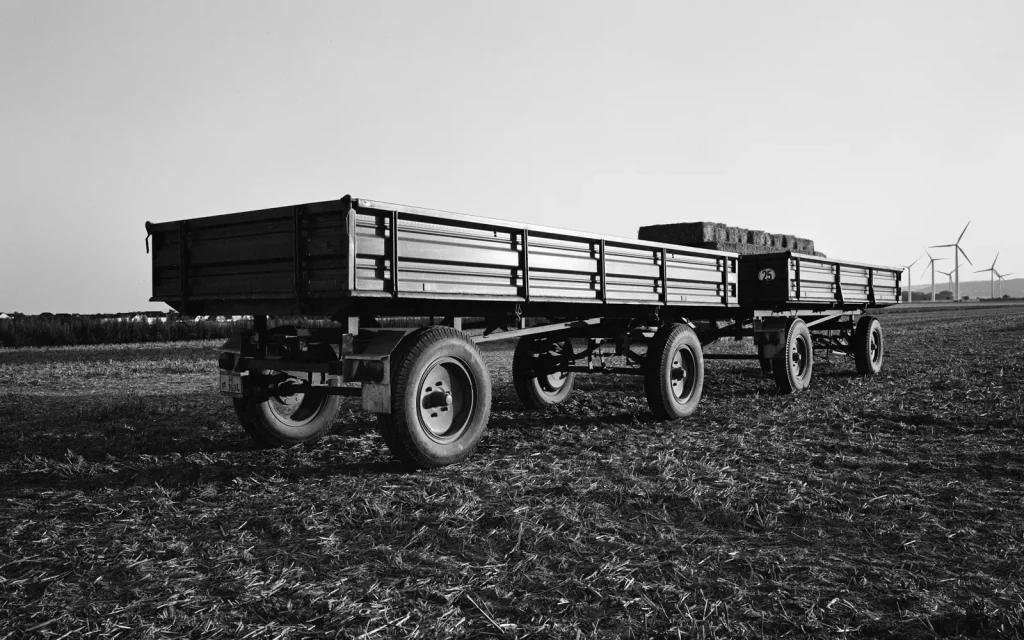
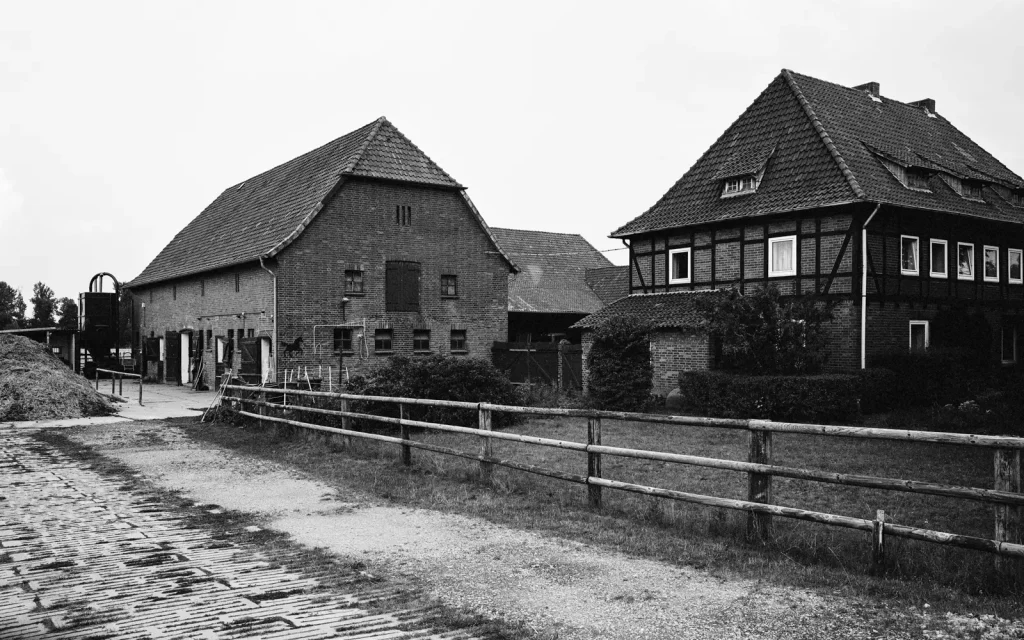
Two Concepts (I had) to Think About
Recently, I saw two YouTube videos from fellow photographers who reflected on two rather theoretical considerations about photography. Although I feel familiar with these topics, they strongly resonated with me in regard to my agricultural landscapes project.
Previsualization
Greg from Analog Insights discusses the problems you can run into with the concept of previsualisation (“One Shot: Bug Lady with Pentax 67”). In this context, he presents the photograph of an agricultural silo. Though Greg had been highly excited with the subject when found in the wild, he was rather disappointed by the final image. The photographic representation couldn’t meet his expectations. I guess we all discover such effects from time to time. Why do we lack the ability to properly previsualize? Maybe, we sometimes wear rose-colored glasses – we just want the subject to look good. Because it’s a rare finding? A special occasion? Or does it just perfectly meet our personal favor? A contributing factor with film photography should be that we don’t see the results instantly. There is plenty of time to alter and idealize the image inside our heads.
Closely related is an issue that I call “Fata Morgana subjects” for myself. Subjects that show a great appeal from the distance – but you won’t be able to catch it properly if you are up close. Oftentimes, I cannot accept that and take the photograph, nevertheless. I know the result won’t satisfy me, but I will later justify the image with a “A fair chance that this could have worked anyway!”
I exclusively shot all images presented here with a Fujica GSW 690 rangefinder camera (more on that below). The finder does not provide a “true to life” experience like for instance a SLR does. I think this increases the demand to previsualize the final image a lot. In consequence, I feel great pleasure when an image turns out the way I wanted it to be. Or even greater pleasure when the image surpasses my expectations.
Showmanship
Matt Day addresses in his podcast-like series ARCHIVES the use of photographic effects like a shallow depth of field, film borders or the “medium format look”. (Episode 4, around 20:45 ) He states that many of these effects can end as a crutch. A crutch to overcome a meaningless subject or a sloppy composition.
I think Matt is right, special effects are always tempting. In the past, I took my shots wide-open whenever possible (with exception of the architectural matter). Wide-open as the default setting: “Such a nice bokeh!”, “For the background separation!” With time and experience, I have slowly begun to abandon this habit. For the recent Agricultural Landscapes series, I consciously decided not only against the bokeh. I also avoided any close-ups and detail shots. At first, this felt strange. “My images will lack this special kind of magic, won’t they?” But it quickly turned into a liberating feel – the same way a basic point-and-shoot allows you to focus on subject and composition.
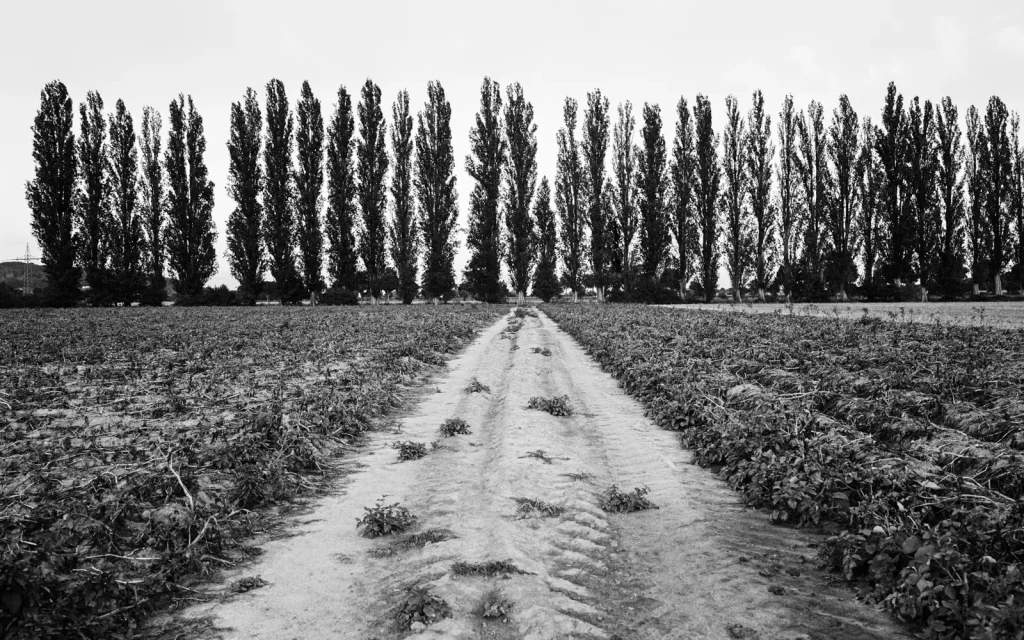
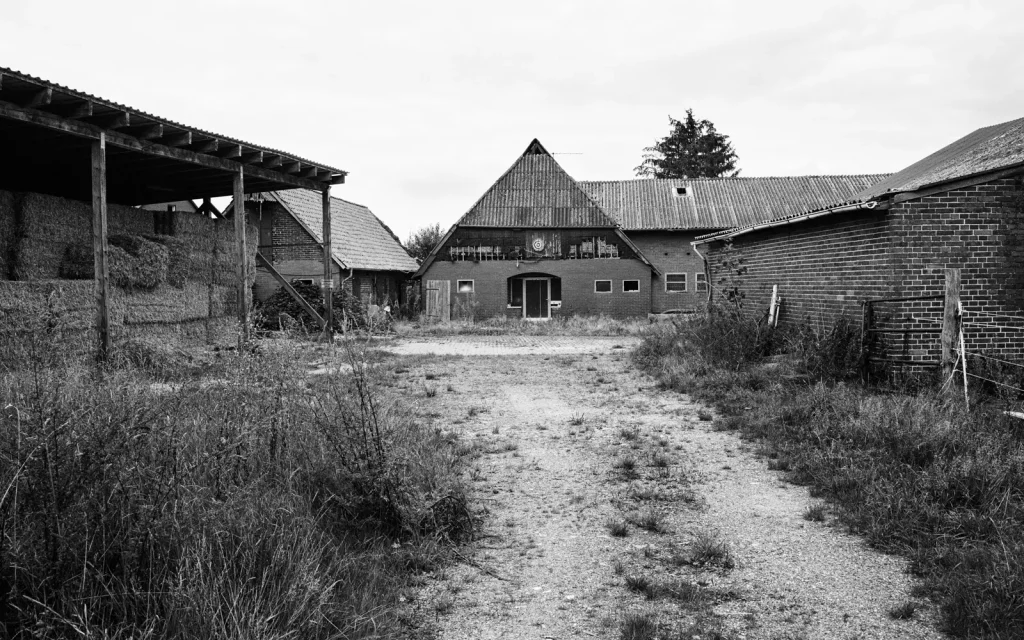
Out in the Fields
Back to practice! I took all the photographs in two main areas: around my hometown Hannover and around the home of my parents-in-law. As you will probably notice, the places where I took the images are mentioned in the captions. Well, I suppose 99.9 percent of you readers have never heard of these small villages in northern Germany before – and will likely not hear of them ever again. Anyway, I see this as a little appreciation for these unpretentious places. But now it’s time for some stories.
Once, as I was heading back home, a large rain cloud followed me. Strangely, the shower almost exactly synced itself with my own velocity. Ride like the wind, kind of. Whenever I stopped to approach a subject, the cloud caught up and teased me with a bunch of rain drops. “Take your picture and move! Move!” This run-and-gun game really taught me to work under time pressure. #22, the one with the potato field, was made under these circumstances.
Cows are a peculiar species. Oftentimes I encounter cows that are pretty curious. Too curious, in fact. When I stop at the pasture, these characters approach the fence fast. Before I have my camera ready, they already stand in front of me. That makes it impossible to photograph them without having the fence in the frame. (I don’t like this, the fence always clutters the image!) On the other side, there are cows that seem to have no interest in my presence. Or even worse, cows that seem to avoid me and retreat. #12 shows cows of the latter type. I should mention that I always have an uneasy feeling with cows: taking a picture of an erratic moving subject when a single frame costs you more than four Euros.
More Stories…
One time, I didn’t reach any agricultural landscape at all. After I had driven almost an hour through the city and along a canal, I entered a forest. While I was following an endless and lonely gravel path, my thoughts drifted away. Then, as if I heard it through cotton wool, the ugly sound of a deflating tire crept into my ears. “Shit! In the middle of nowhere!” Although I was carrying a repair kit in my backpack, I didn’t feel confident to use it. I had never repaired a flat tire myself before, and the kit rather fulfilled an alibi function. So what to do?
Fortunately, the forest turned out to be not that far away from my parents’ house. And fortunately again, they were at home. Roughly half an hour later, my dad picked me up in a nearby village. Thank God their Volkswagen compact could swallow my ill-fated bike! So I returned home with just a single photo taken, which I later discarded.
During another trip, I sped right through a swarm of little mosquitoes. This was really unpleasant as several of them ended up in my eyes (I don’t wear any protective glasses when on my bike … should rethink that). In the following days, my eyes had swollen and glowed red like I had smoked at least ten joints a day. #9, the one with the sugar beet harvester, was taken immediately after this incident.
Film Choice
To give my images a classic, yet not too “elegant” look, I chose Kodak Tri-X. Although it is rated at ISO 400 and thus a rather fast film, I decided to push it two stops (while metering at EI 800). This strategy allowed me to shoot handheld at f/16 most of the time. And it yielded images more contrasty than Tri-X shot at box speed would have. However, I encountered that there is way less room for errors when pushing film. Incorrect metering often had led to shots I discarded – which would have been recoverable under normal circumstances.
In the recent past, I tested a lot of different film stocks (various types of color negative film, slide film, expired film). It felt refreshing to try something new, to deviate from my usual routines. “When I’m done with this Velvia, I’m gonna try the Fuji Industrial. Or should I skip the Industrial and shoot the expired Portra VC first?” However, at some point I saw myself drifting into arbitrariness. Lost my thread. Thus, returning to Tri-X for this project was like meeting an old friend. No awkward small talk, I immediately felt comfortable. And I suppose, choosing Tri-X is absolutely future-proof. If there is film, there will be Tri-X.
Geekery: Short Review of the Fujica GSW690
Normally, I shoot (agricultural) landscapes the same way I do most of the other subjects: with a normal lens and the aperture wide-open. For this series, I wanted to try the “classic” way: wide views and sharp from close to infinity.
Well… I must admit I purchased the camera only with this specific project in mind. It cost me roughly 350 Euros with additional 150 Euros for shipping and import taxes. Not exactly what I call a bargain. But, compared to Mamiya 7s and Plaubel Makinas these days, the Fujica seems to be a reasonable deal.
The Fujica GSW690 and its descendants are large rangefinder cameras with a fixed lens of 65mm focal length (f/5.6; comparable to a 28mm lens with 35mm). The camera exposes eight large 6×9 frames on one roll of 120 film. Spec sheet turns out sparse: no light meter and no information in the finder besides frame borders and rangefinder patch.
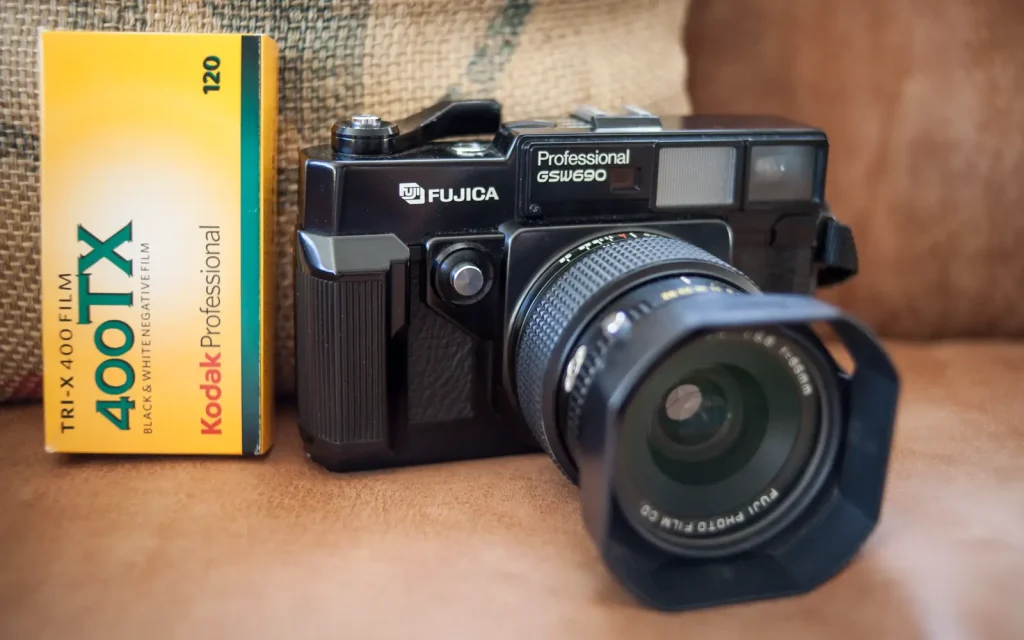
But the camera offers two shutter buttons, a regular one on top and a second on the front, meant for shots in portrait orientation. These shutter buttons are my biggest complaint about this otherwise robust and unpretentious machine. The buttons are quite sensitive. And they sit on the body rather exposed. (Fuji introduced a lock switch with the camera’s second iteration.) Because I wanted to take pictures of landscapes and not of the interior of my backpack, I established a new routine. After taking a shot, I would avoid advancing the film – until I’m ready to take the next one. “Oh no. It won’t take a picture. Is it broken?” – “Ahh, damn. I forgot I have to advance first!”
Further Totally Subjective Impressions on the Camera
Would I describe the Fujica as heavy and bulky? It depends! For a medium format camera that shoots 6×9 frames, I think it’s pretty okay. However, the camera’s size in combination with its form factor (a brick with a large-ish tube attached) proved to be unsuitable for all my camera bags. Therefore, I revived a battered rucksack I had found at the bottom of my closet. This old fella swallows not only the Fujica, it also can accommodate my drinking bottle (which is mandatory during the summer!).
What else can I say about the Fujica and the way I use it? Taking photographs is a fairly simple process – at least for my agricultural landscapes. As I maintain an aperture of f/16, I only must determine the correct shutter speed. In most cases, it alternates between 1/125 and 1/250 of a second. Focusing isn’t a big issue either – it is set to infinity. Initially, I struggled a bit with the finder. As it shows a rather wide field of view, the finder exhibits a fair amount of barrel distortion. To keep the subject’s vertical lines straight, I often align them with the frame lines in the finder. Due to the distortion, however, subject lines and frame lines do not appear straight. They are heavily bent, making it difficult to judge the framing. In conclusion, I would describe the handling as remarkably similar to a point-and-shoot camera.
Now make sure to also check out Andrew’s overview of the Fuji medium format rangefinders!
More Agricultural Landscapes
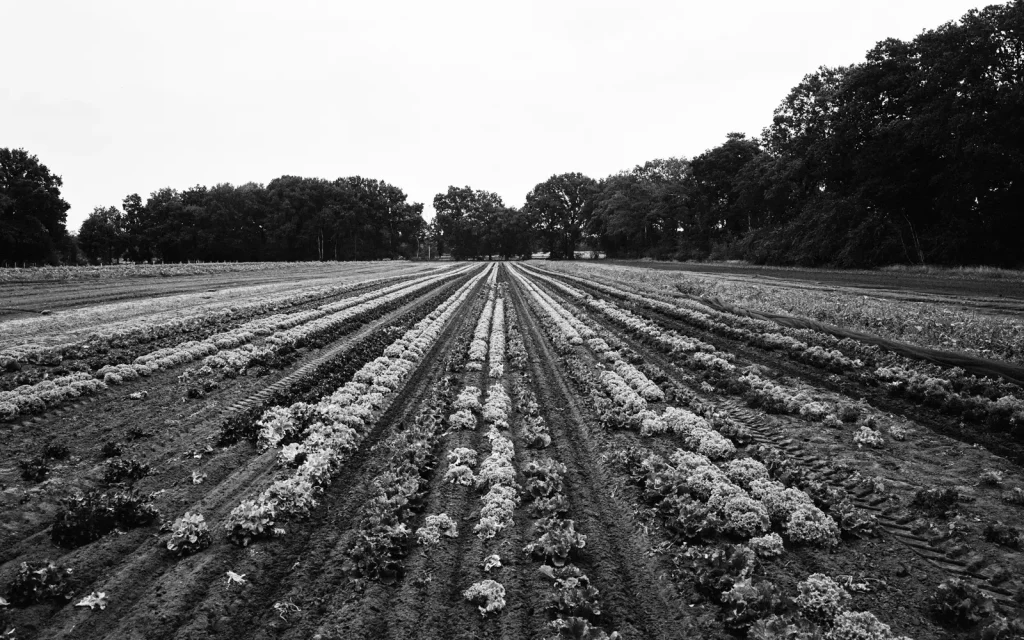
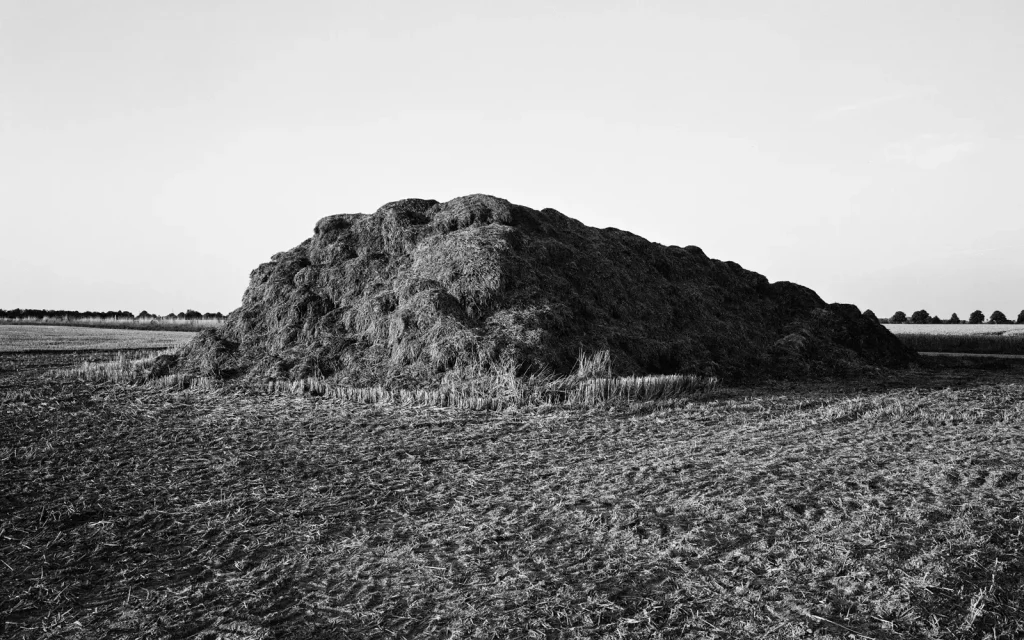
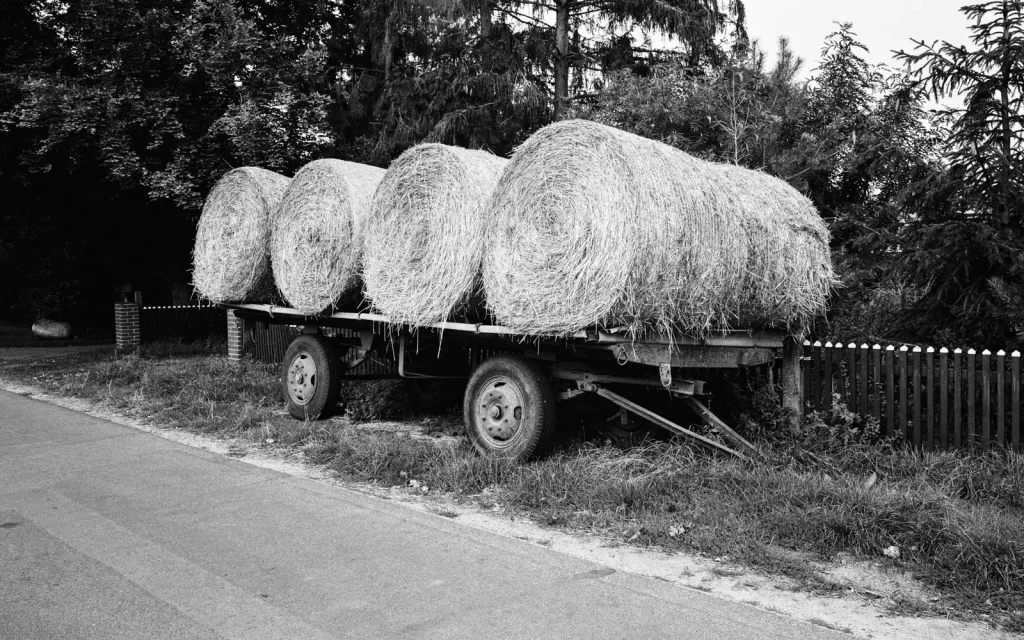
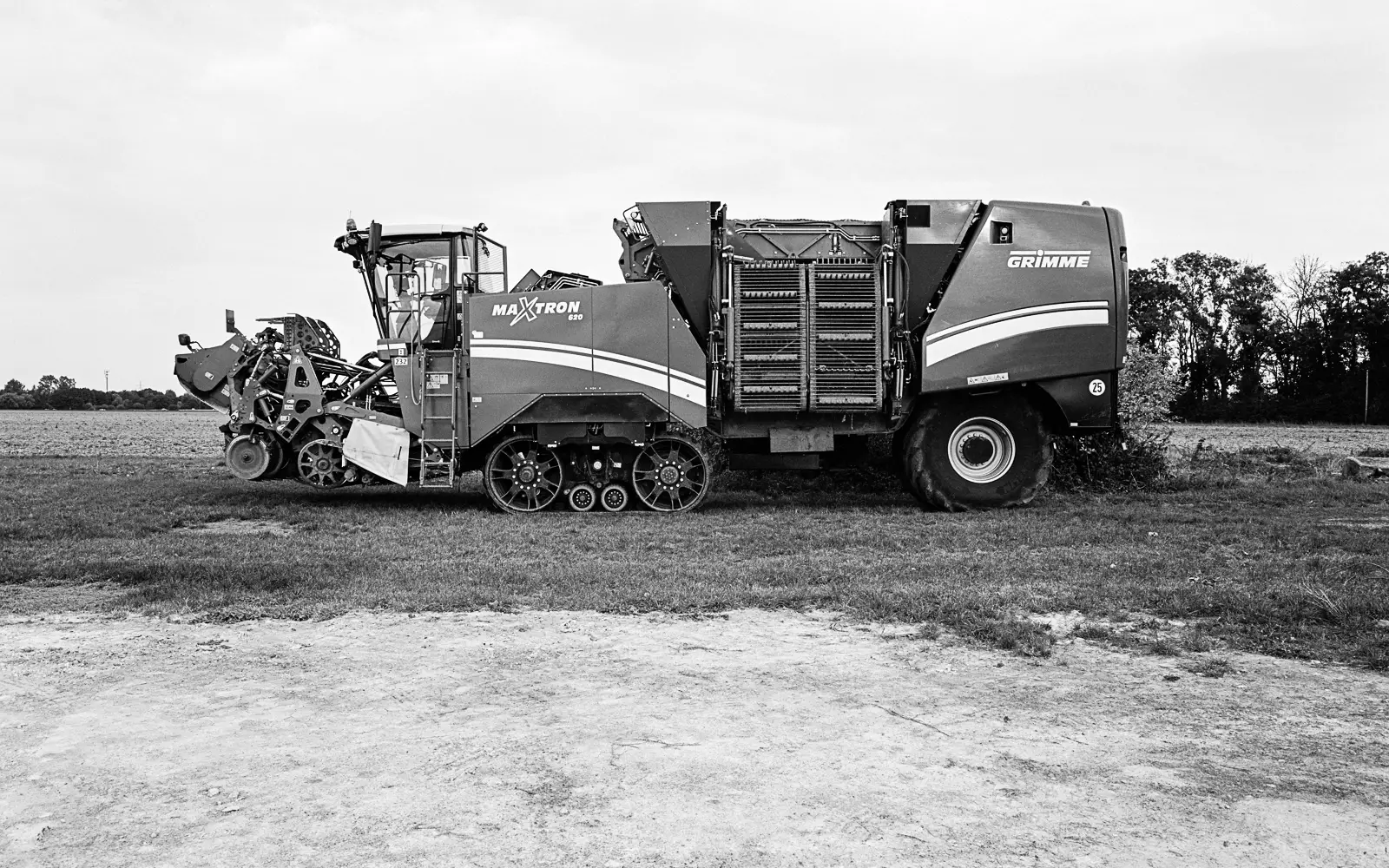
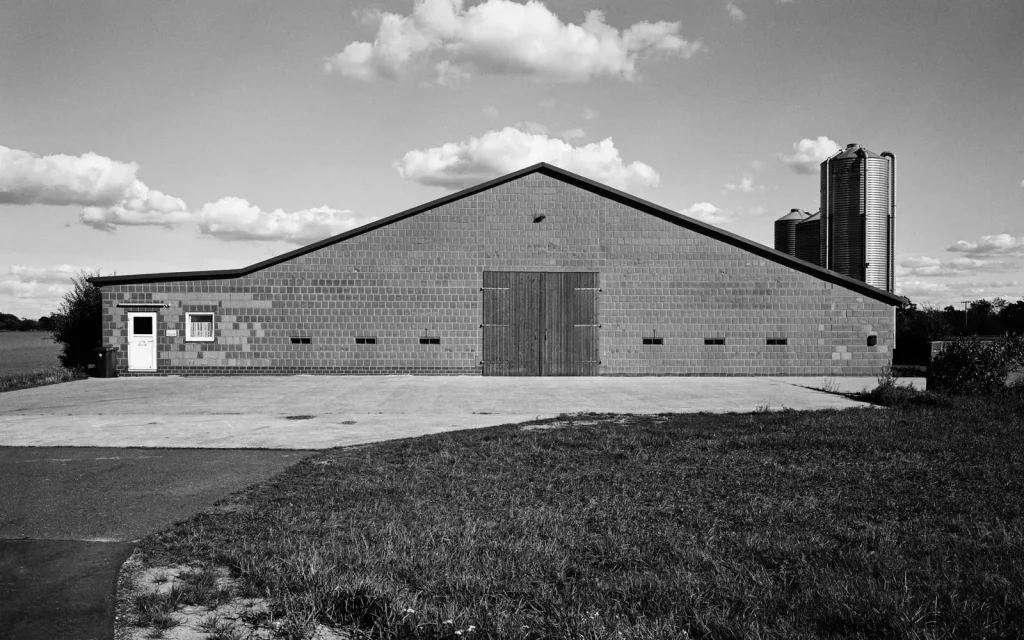
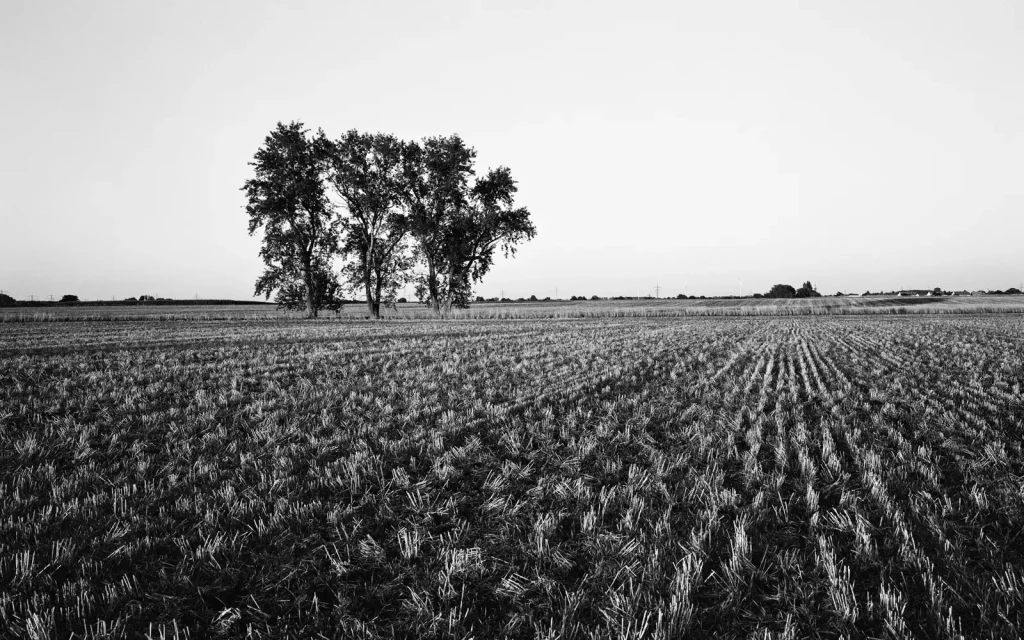
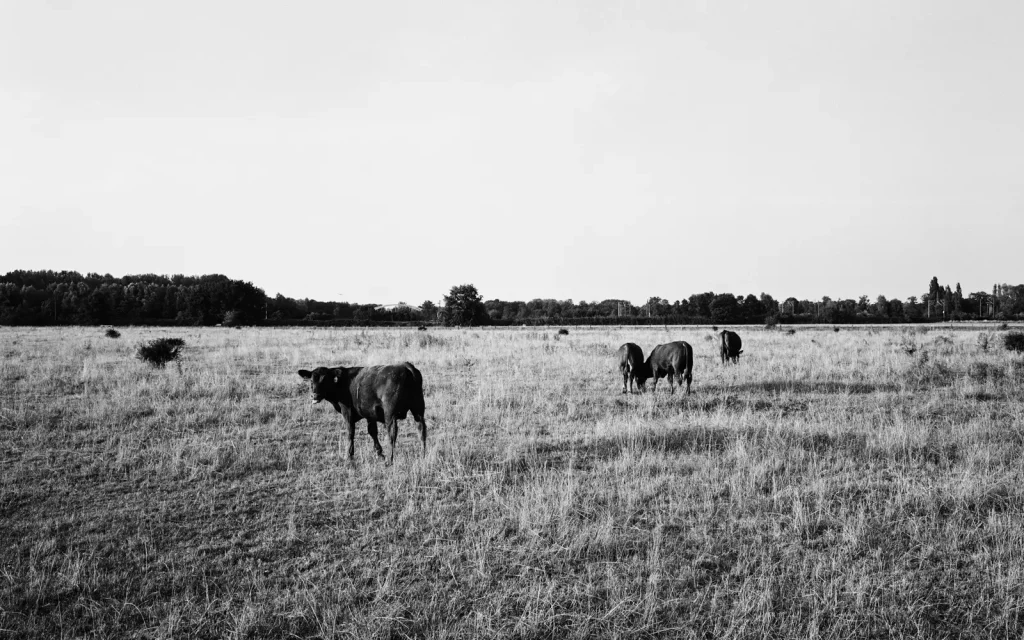
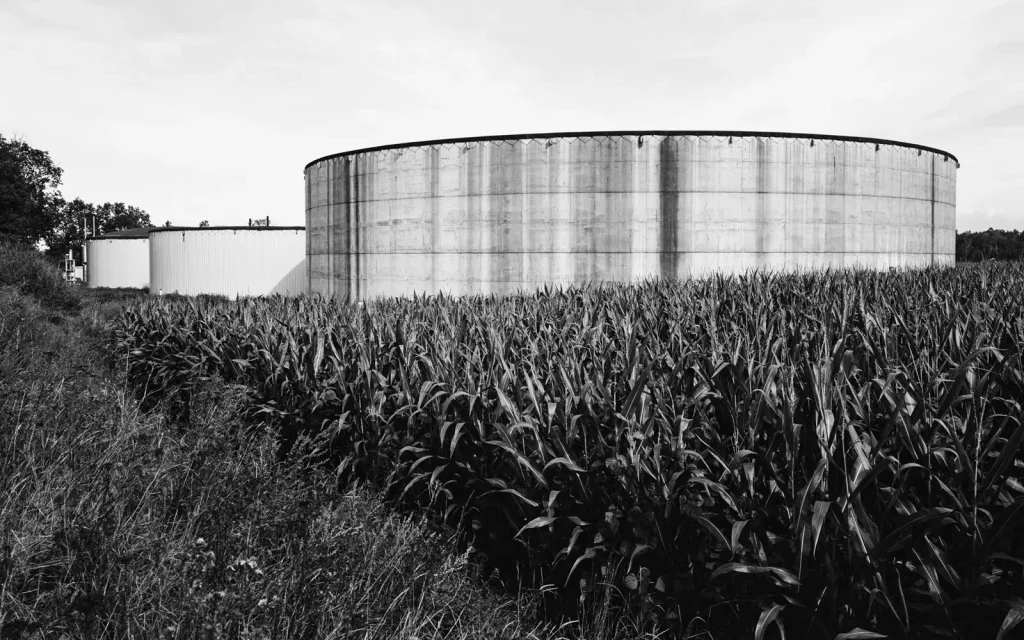
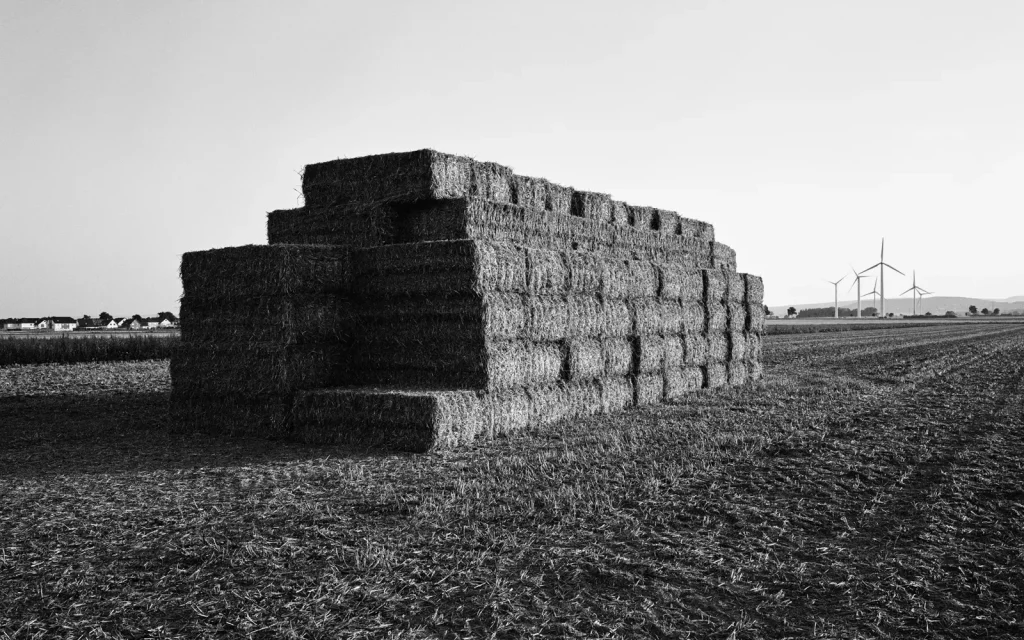
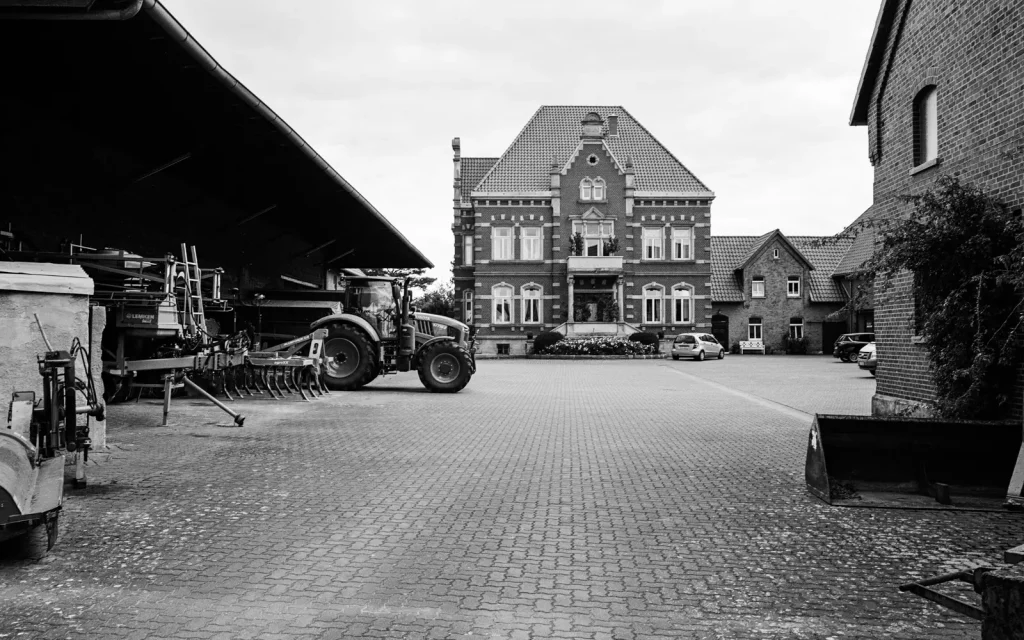
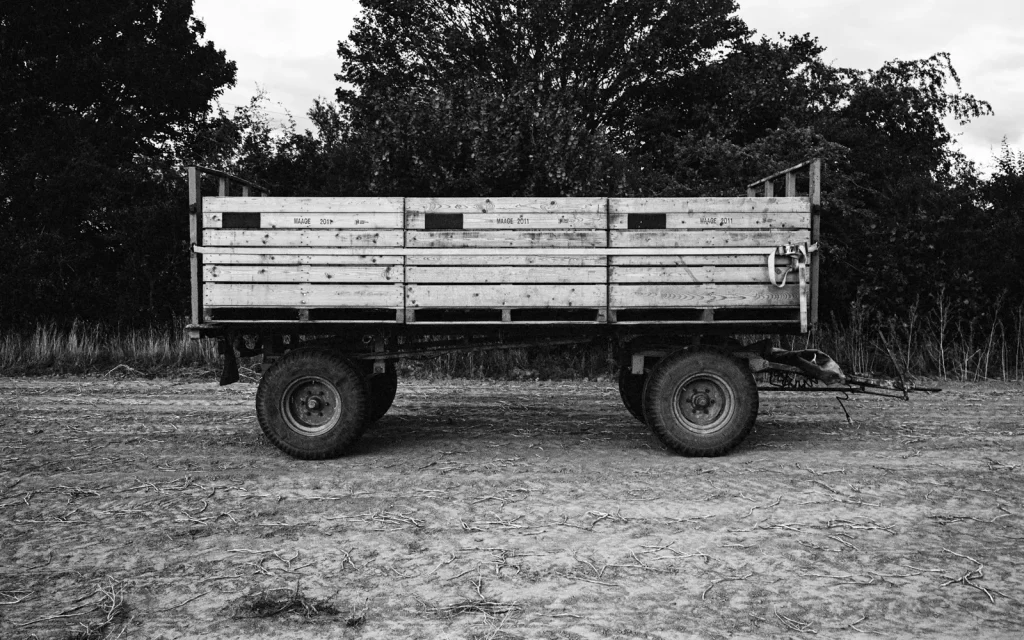
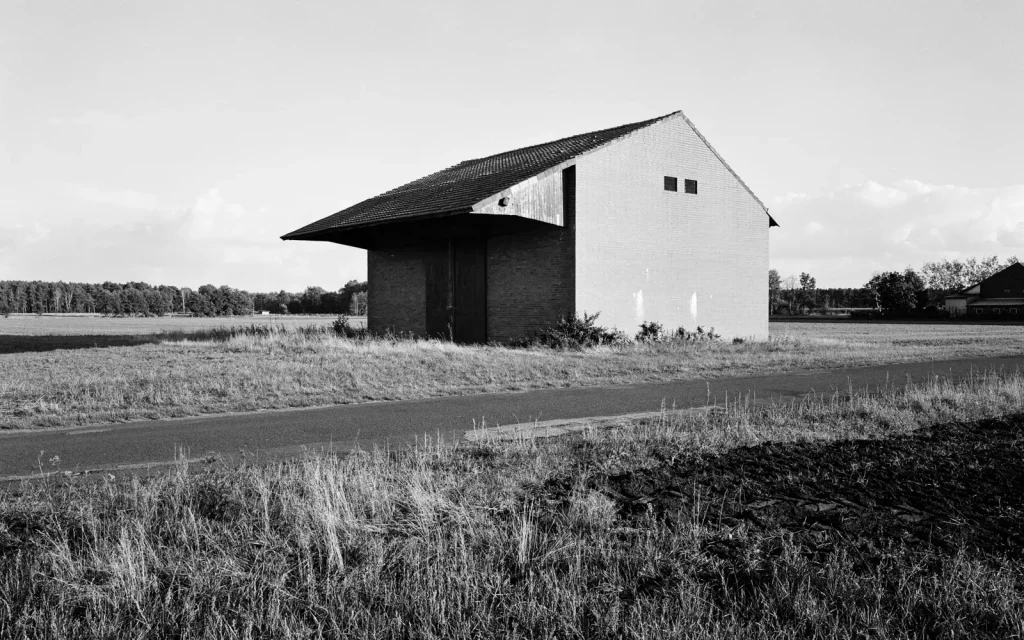
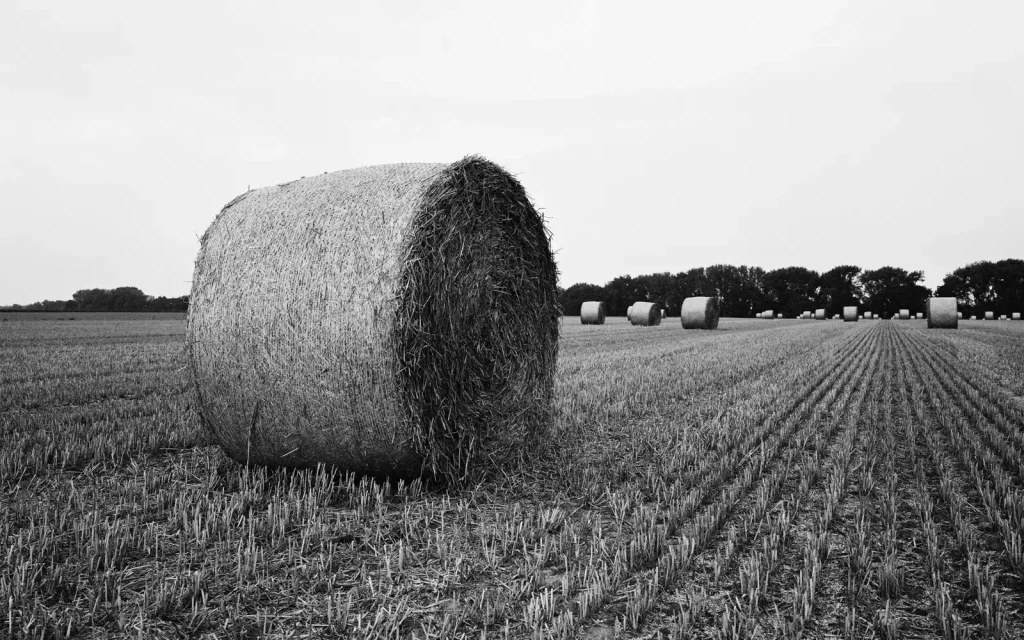
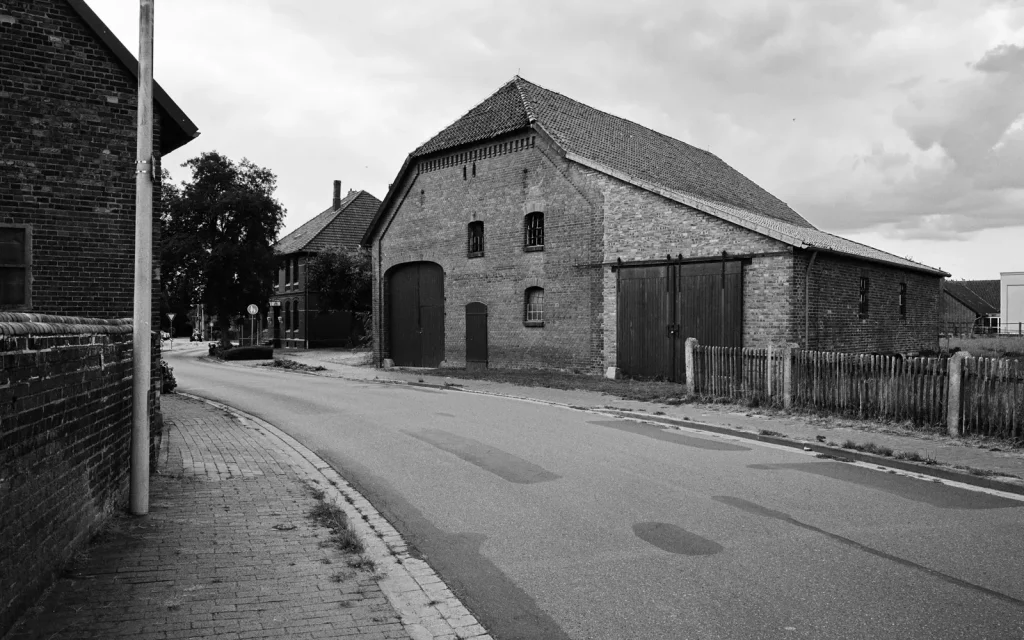
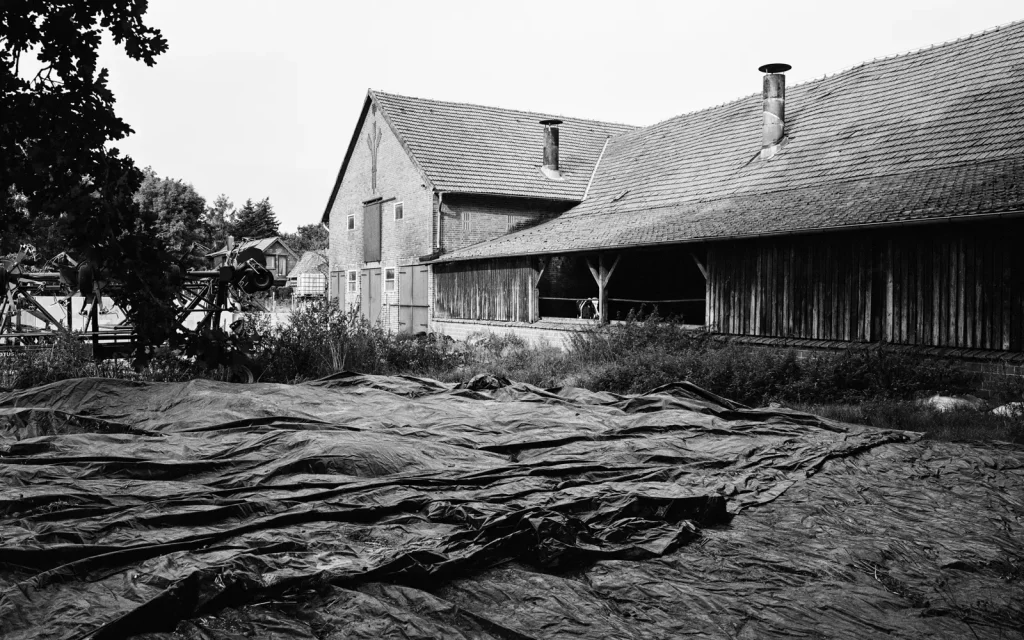
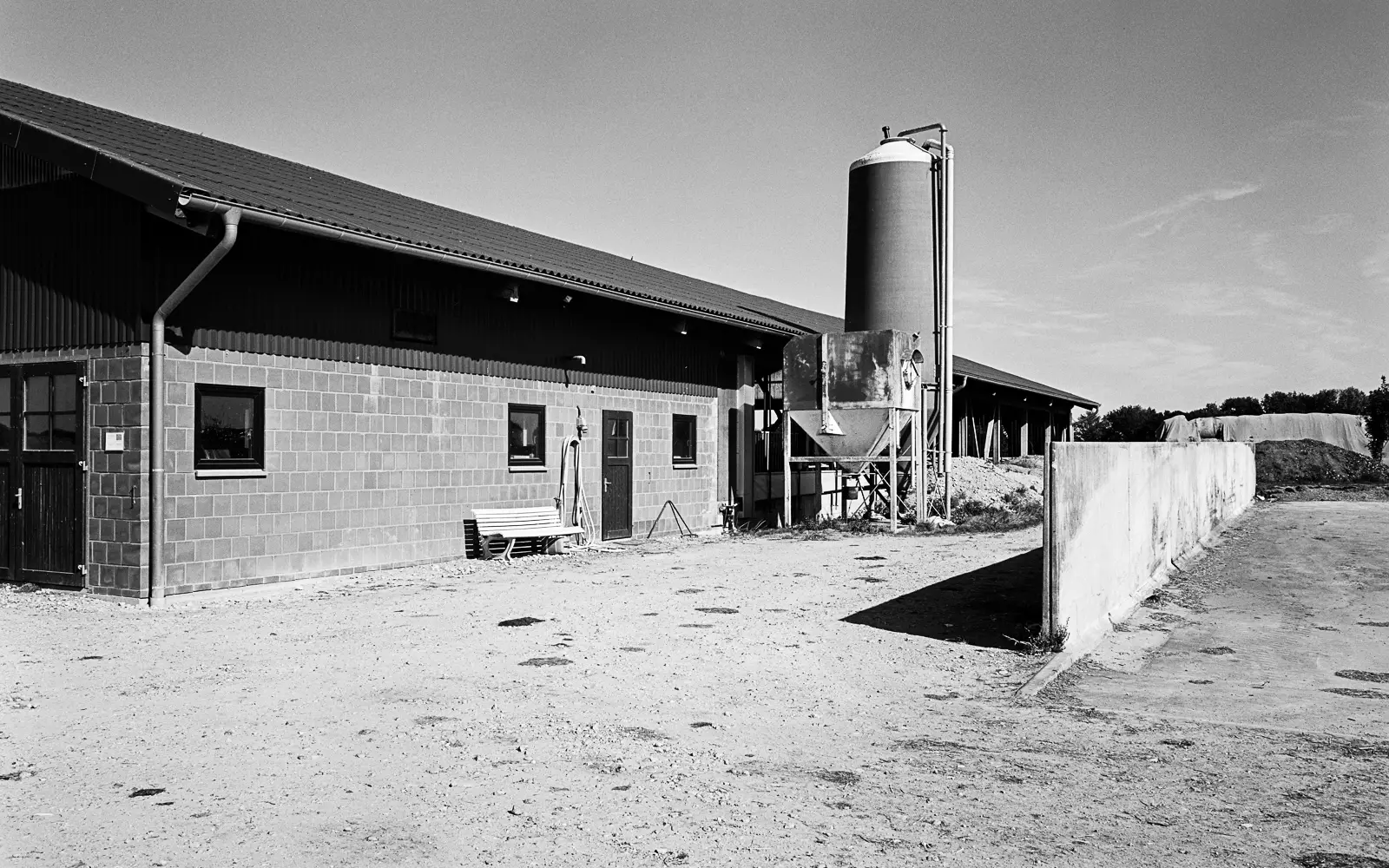
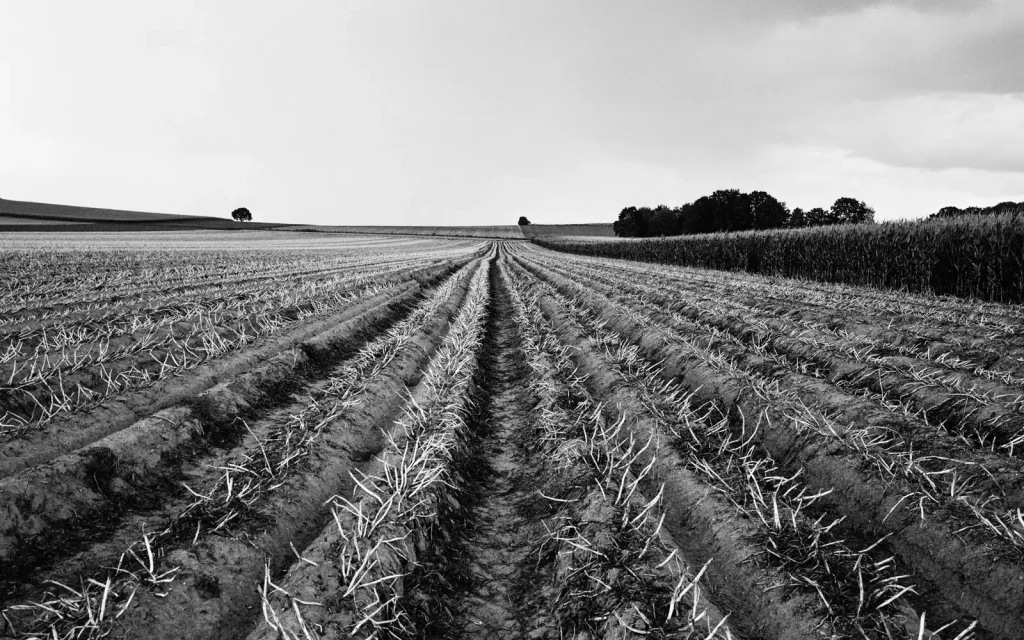
Closing Remarks
I took all the images in this article during August and early September. As the year goes by, I’m eager to add some autumn and winter scenes. Unfortunately, the weather is less stable now. Photography and biking are both activities that (normally) benefit from the absence of rain. Furthermore, the light gets more precious each day. Since the middle of September, the sun sets so early that an extended tour is reserved for the weekends.
Unfortunately, there is another reason why my activities in photography have been restricted to the weekends lately. I slipped in a small personal crisis, lost the ability to take pleasure in my job (well… at least, I still have a job). During the past weeks, I often slept just four to five hours a night. Exhausted and with the head full of nagging thoughts, there isn’t much room left for photography. Worries and creativity don’t go well together. On the other side, I experience the good days way more intense than before. On Saturdays, after eight fine hours of sleep, I feel like I could uproot trees all day. It’s a short burst of motivation, an escape. I hope – I believe – I will overcome this crisis anytime soon. Until then, I’ll try to make the most out of my hobby.
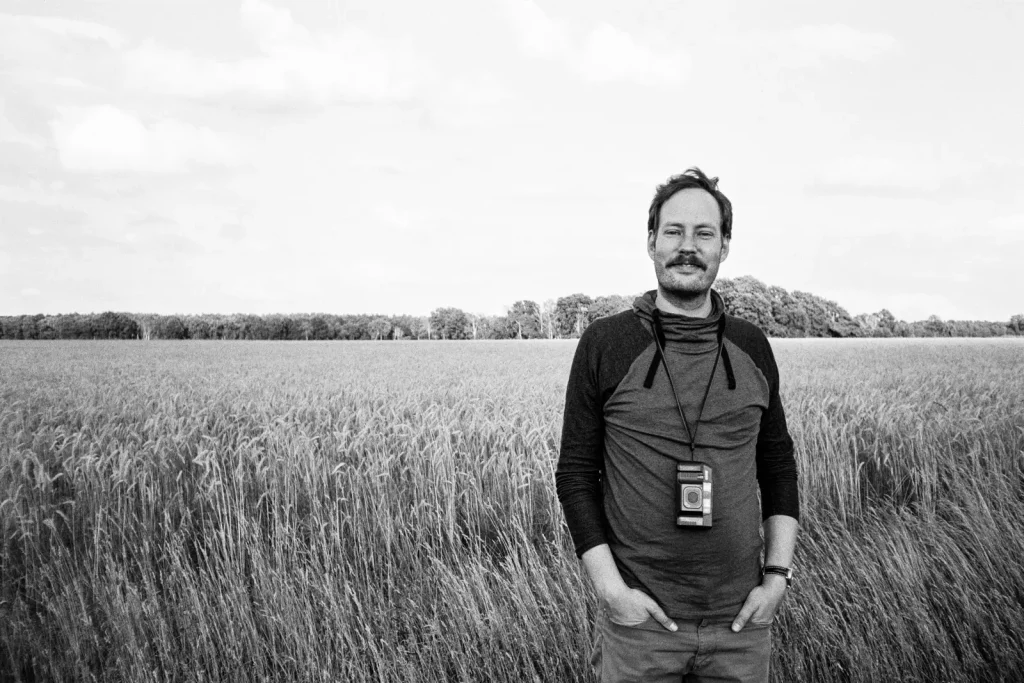
So, I hope you enjoyed my little nod (head bang) to Heinrich Riebesehl and the musings related to this project. If you are interested in my first piece about Agricultural Landscapes (in which I also talk about this photographer), you will find it here.
And as ever: thanks for reading!
Share this post:
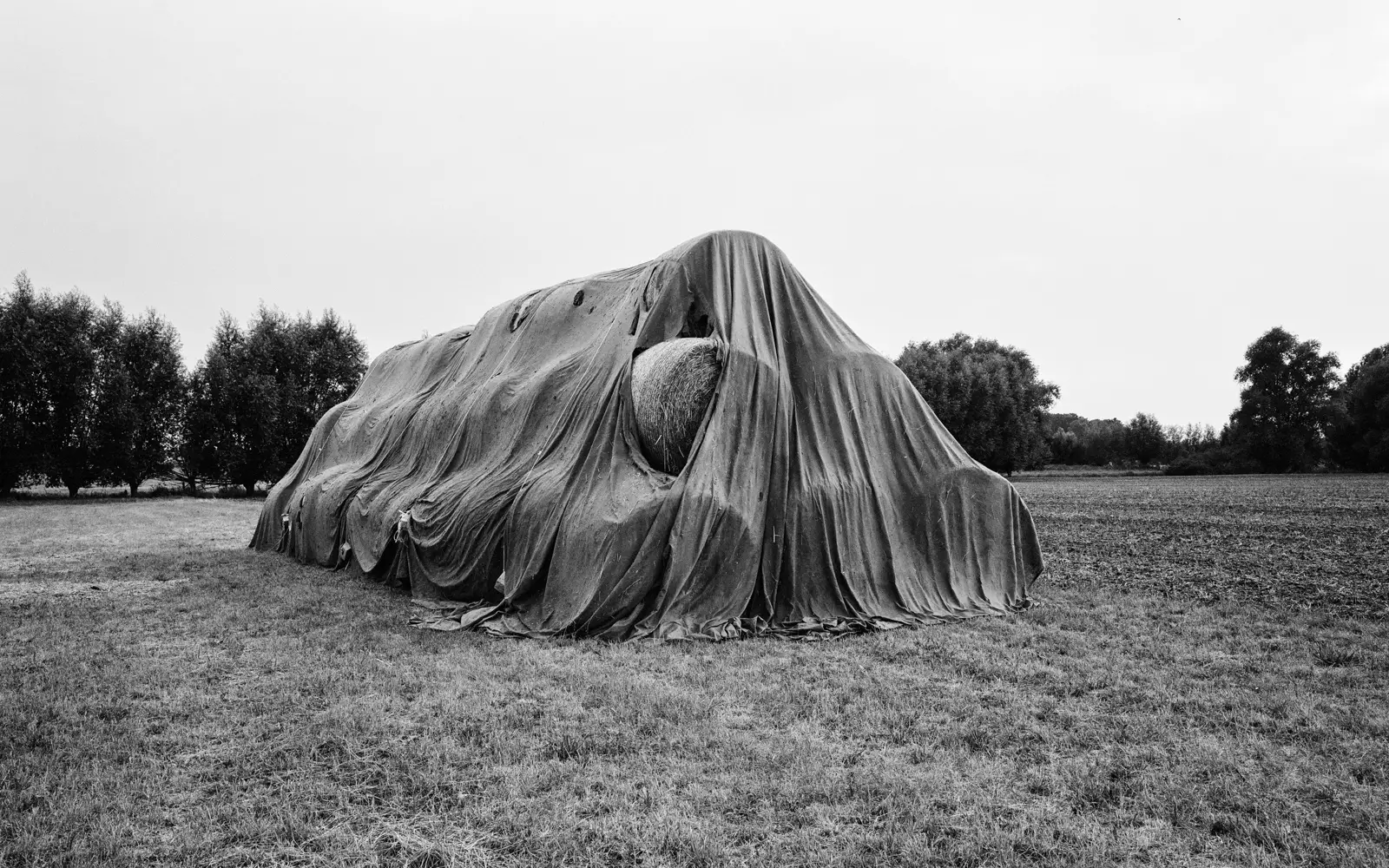








Comments
Jez Hastings on Agricultural Landscapes Reloaded – by Christian Schroeder
Comment posted: 06/11/2020
I too think like this and have struggled with giving my validity because of such distinct limitations. Although for me it allowsthe push for creativity much great voice. It is temporal and considered.
I would like to further this conversation with you sometime. I am embarking on a PhD at the moment examining the gaps and space between viewer and audience in regards to the embodied (walking) experience of being in. modern agricultural landscape the was once thought as being picturesque.
Thank you for sharing your thoughts and great images!
Comment posted: 06/11/2020
Nik Stanbridge on Agricultural Landscapes Reloaded – by Christian Schroeder
Comment posted: 06/11/2020
Your images reminded me greatly of the work of Gerry Johansson who’s book, Deutschland, I have in my collection. He even captions how work in the same way you do. Not all his images are rural, but they do have the same simplicity and elegance.
Comment posted: 06/11/2020
Scott Gitlin on Agricultural Landscapes Reloaded – by Christian Schroeder
Comment posted: 06/11/2020
Comment posted: 06/11/2020
Peter Lenz on Agricultural Landscapes Reloaded – by Christian Schroeder
Comment posted: 07/11/2020
Comment posted: 07/11/2020
Adrian on Agricultural Landscapes Reloaded – by Christian Schroeder
Comment posted: 07/11/2020
I'm not sure if you are aware of Paul Hart's work made in the Fens of East Anglia? It might be of interest if not.
Comment posted: 07/11/2020
Phil Steelandt on Agricultural Landscapes Reloaded – by Christian Schroeder
Comment posted: 08/11/2020
Before reading your splendid article, I never heard of Riebesehl.
I looked it up and discovered very powerfull images in all their simlicity (or what looks like very simple shots at the first sight...)
Thanks for that.
Fuji690:
I answered you in the reply you left on my "5 frames with" that I had hesitate a lot between the 90mm and the 65mm version of the 690.
If I had seen your pictures before my purchase in june...I would have choose the 65mm ;-)
I'm triggered now to make some rural landscapes with the 90mm...I live in a small village in one of the few hilly landscapes in Flandres (in Belgium)
Again... thank you that you triggered my curiosity twice with your article.
Comment posted: 08/11/2020
Alexander Seidler on Agricultural Landscapes Reloaded – by Christian Schroeder
Comment posted: 08/11/2020
Especially #22
Comment posted: 08/11/2020
Phil Steelandt on Agricultural Landscapes Reloaded – by Christian Schroeder
Comment posted: 08/11/2020
I'll post something before spring with the 690...I'll keep Riebesehl in my mind ;-)
It's not so imortant to take a picture with a 65 mm or a 90 mm.
We both have fixed lenses and we have to deal with the advantages and the disadvantages of our cameras.
That's what triggered my curiosity when I saw your pictures.
Comment posted: 08/11/2020
Stuart Harrington on Agricultural Landscapes Reloaded – by Christian Schroeder
Comment posted: 08/11/2020
Comment posted: 08/11/2020
Mar o Andrés on Agricultural Landscapes Reloaded – by Christian Schroeder
Comment posted: 09/11/2020
The parameters you chose for this project are really constraints.
⟪ Constraints will set you free. ⟫ Using one camera, one focal length, one lens and one film [at one speed] can be liberating by eliminating the tyranny of choice [the more choices there are, the more difficult it is to select and then be satisfied with ultimate choice]. Another benefit, it’s quicker to be in the moment and to focus/observe. You discovered that when you made an image quickly just as it started to rain.
I admit that this approach will not suit everybody. But, in this case, it works for you. It also worked for you in Hunting Dinosaurs or: Photographing Abandoned Factories [35mmc: 2020/.06/10] when you were inspired by the Bechers [Bernd and Hilla] approach.
TFor your current project, you’ve added Heinrich Riebesehl’s, which align with the Bechers. In fact, the Bechers also used Heinrich Riebsehl's constraint ⟪ The sky: overcast and neutral in most cases. ⟫
Bravo. I could not agree with you more.I wonder what your next project will be.Keep up the⟪ constraints. ⟫
Comment posted: 09/11/2020
Kodachromeguy on Agricultural Landscapes Reloaded – by Christian Schroeder
Comment posted: 09/11/2020
Comment posted: 09/11/2020
Castelli Daniel on Agricultural Landscapes Reloaded – by Christian Schroeder
Comment posted: 02/12/2020
I tucked your post away until I had some time to read and enjoy your pics.
These remind me of my grandmother’s farm: sturdy buildings, well worn serviceable tools & equipment and a timeless look.
My favorite pic is #18...when these rolls were wrapped in white plastic, we told our daughter (then a wee one) that they were giant marshmallows that grew on farms. I think she’s still in therapy because her parents told her a ‘white’ lie!
I hope your ‘pod’ is safe & healthy!
Comment posted: 02/12/2020